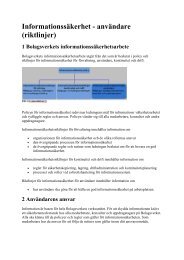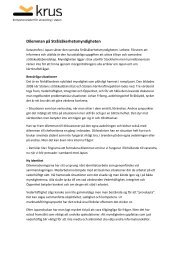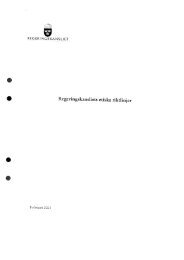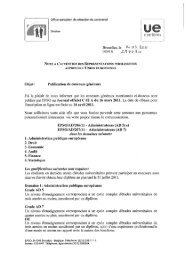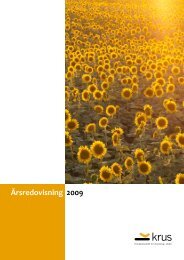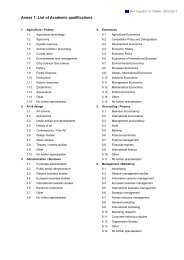Dialogkompetens i skolans vardag - Publikationer - LTU - Luleå ...
Dialogkompetens i skolans vardag - Publikationer - LTU - Luleå ...
Dialogkompetens i skolans vardag - Publikationer - LTU - Luleå ...
You also want an ePaper? Increase the reach of your titles
YUMPU automatically turns print PDFs into web optimized ePapers that Google loves.
dialogue requires the existence of different environmental conditions. Previous<br />
studies have shown that external structures in the form of hearing technology and<br />
a furniture ring framed the conditions of communication (Ahlström & Preisler,<br />
1998). In a pilot study, eight pupils described their experiences of different technological<br />
solutions. The pupils stated that more flexible solutions contributed to<br />
their taking greater responsibility for the classroom communication (Wennergren,<br />
2004). The pupils’ perception of hearing technology having been made visible,<br />
they were able to influence further work for the purpose of increasing pupils’ activity<br />
in the dialogue between pupils.<br />
Study I<br />
Research question: How do pupils describe their choice of the best listening environment<br />
in school?<br />
In the study the data production was carried out with the aid of the teachers participating<br />
in the project. The teachers asked their pupils to draw and explain their<br />
best listening environments in the school in order to take part in a group conversation<br />
with four people. The material analysed consisted of 165 pictures with attached<br />
written explanations. The result showed that the listening role required four<br />
environmental conditions: an arranged sound environment, possibilities of visual<br />
support, conversation rules and a comfortable environment. The result also<br />
showed that some pupils were unable to express their own listening strategies but<br />
nonetheless used different strategies that would also be possible to convey to others<br />
in their class community (cf. Gullacksen, 2002).<br />
One conclusion was that pupils of all ages needed to get more opportunities to<br />
name environmental conditions for being able to assume an active listening role.<br />
The pupils’ listening strategies, or absence of listening strategies, affected their<br />
self-images and in the long term their identity development. In practice this means<br />
that all adults and all pupils irrespective of age should be ‘forced’ to verbalise<br />
their conscious listening strategies, train to find words for not yet formulated ones,<br />
and be allowed to listen to others’ strategies. Since not all pupils had a conscious<br />
attitude in these matters, the study showed the importance of increasing pupils’<br />
participation.<br />
It is not enough to attend a hard-of-hearing class in order to develop listening<br />
strategies; the issue of prerequisites for pupils’ active listening has to be constantly<br />
present. Failure to work for the improvement of the pupils’ oral dialogue<br />
94



